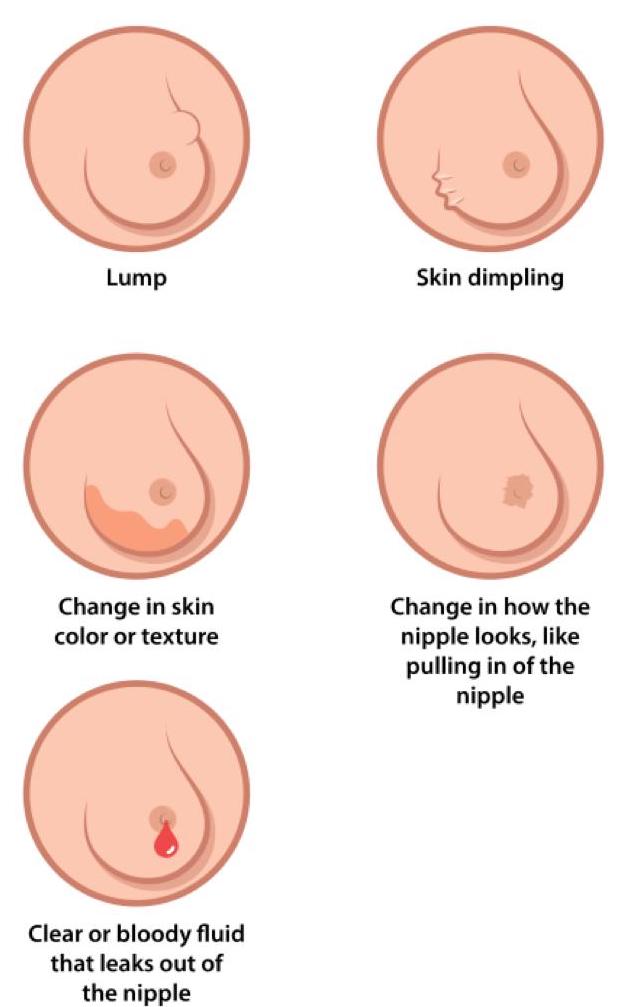The severity of a cancer is determined in part by the findings from the biopsy as outlined in the pathology report. Staging is important for identifying appropriate treatment options for a particular cancer and individual. It is important to note that although the stage of a cancer is important, the prognosis may be affected by other factors, such as age of the patient and other health related factors.

TNM Staging
One common method of staging is the T/N/M system, which identifies three important characteristics of cancer and assigns a level of severity to each of those characteristics to determine an overall degree of severity for the patient's cancer.
- The "T" component labels the size of the tumor and whether or not it is well-contained or if it has spread to surrounding tissues. The T component is accompanied by a number 1-4 that further identifies the size and local spread of the tumor. A higher number indicates either a larger tumor or one that has a greater effect on the surrounding tissues.
- The "N" component describes lymph node involvement and indicates whether or not the tumor has spread into the surrounding lymph nodes, the number of nodes involved, and their size. A number from 0-2 indicates the level of lymph node involvement, where a higher number indicates a more severe condition. A relatively small tumor that has spread to surrounding lymph nodes may be classified as a more severe N1 or N2 cancer despite its small size.
- The "M" component indicates if any distant metastases were identified with the cancer. A metastatic growth resides in a location distinct from the original site of tumor formation. In this case, M0 indicates that there are no distant metastases, and M1 indicates that there are distant metastases associated with the cancer. Another letter that corresponds to the system or organ affected by the metastasis may also be paired with the M. This gives further information about the cancer's severity, since the site of metastasis may alter a patient's prognosis.
Each tumor is assigned a series of identifiers, which include a T, an N, and an M component. Together these labels give insight into the severity of the cancer. This set of values is then used to establish a simpler, overall stage for the cancer, which is then described as stage I, II, III, or IV. As would be expected, a mild T, N, and M grading corresponds to a lower stage number. For example, a T1, N0, M0 tumor is most likely a stage I cancer. This simplified staging method can help physicians and patients make treatment decisions and also gives an indication of the prognosis. 1
An example of the Tumor, Lymph Node, Metastasis (TNM) Staging system as applied to breast cancer.
|
|
X
|
0
|
is |
1
|
2
|
3
|
4
|
|
T
|
tumor cannot be assessed
|
no tumor evident
|
carcinoma in situ: abnormal cells have not spread to surrounding tissue sometimes known as "pre-invasive cancer" |
a) tumor diameter is 0.5 cm or less b) tumor diameter is between 0.5 cm and 1 cm c) tumor diameter is between 1 cm and 2 cm |
tumor diameter is greater then 2 cm but not greater than 5 cm
|
tumor diameter is greater than 5 cm
|
tumor is of any size that: a) has a direct extension to the chest wall b) has an extension to the skin that is causing swelling or ulceration c) has both extensions to the chest wall and to the skin |
|
N
|
regional lymph nodes are unable to be evaluated for metastasis
|
regional lymph nodes are free of tumor metastasis
|
tumor has metastasized to lymph node(s) in the armpit adjacent to the primary tumor which are not attached to each other or to other structures
|
tumor has metastasized to lymph node(s) in the adjacent armpit that are attached to other nodes or to other body structures
|
tumor has metastasized to internal mammary lymph node(s)
|
|
|
|
M
|
presence of distant metastasis cannot be evaluated
|
no distant metastasis found
|
distant metastasis present, which may be located in lymph nodes in regions of the chest not included above
|
|
|||
This table was adapted from information found in the 5th edition (1997) "AJCC Cancer Staging Manual" published by the American Joint Committee on Cancer.2
More information on this topic may be found in Chapter 16 of The Biology of Cancer by Robert A. Weinberg.
Some other types of cancer have their own staging scales that are different from the general classifications used for other cancers. To read about some of these cancer stagings follow the links below.
Colon and Rectal Cancer
Prostate Cancer
A good source of information about cancer staging for both patients and healthcare professionals is the National Comprehensive Cancer Network.
- 1 The American Cancer Society [http://www.cancer.org]
- 2 American Joint Committee on Cancer. AJCC Cancer Staging Manual, 5th ed. Philadelphia: Lippincott-Raven, 1997.
